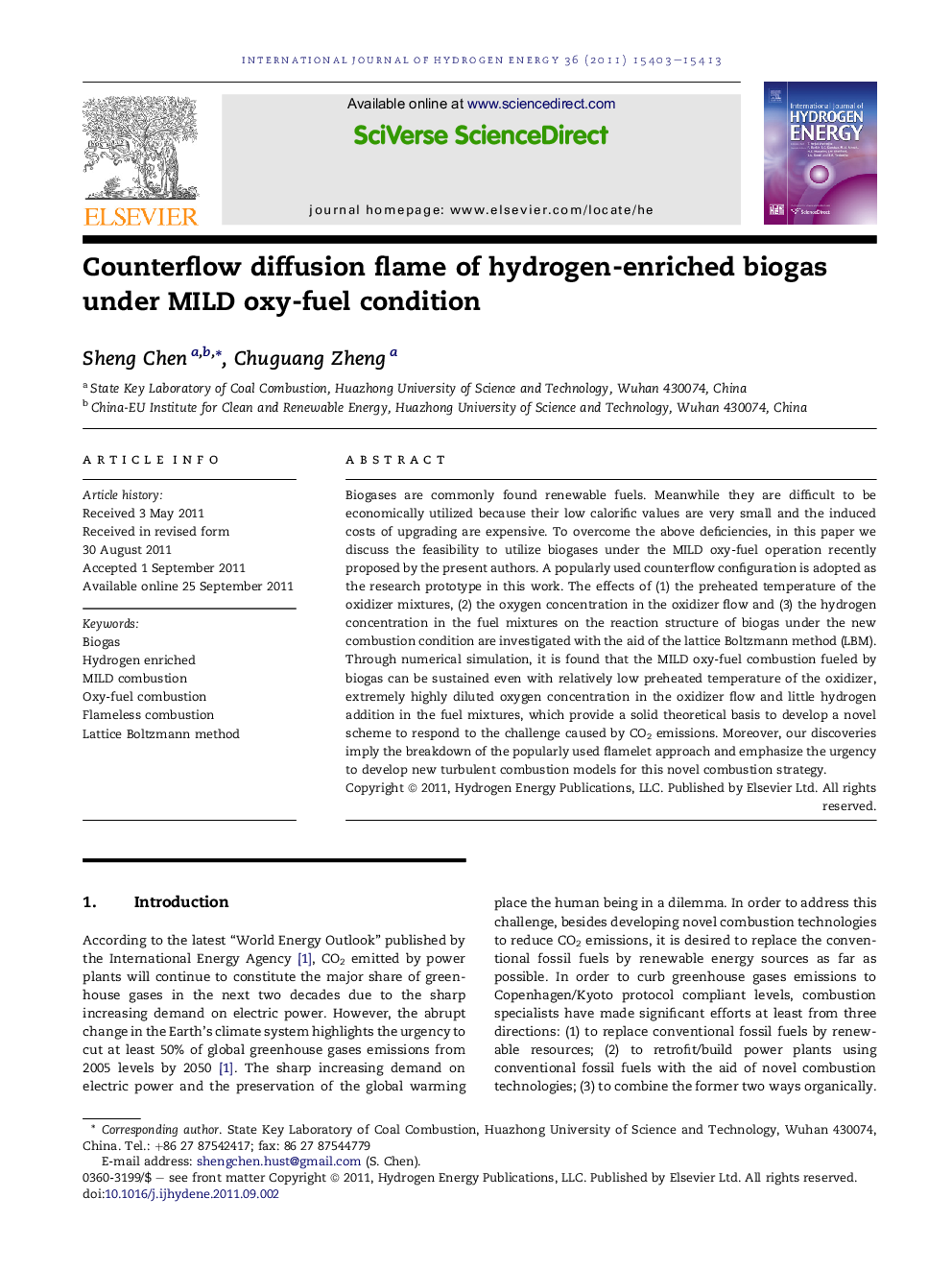| Article ID | Journal | Published Year | Pages | File Type |
|---|---|---|---|---|
| 1271834 | International Journal of Hydrogen Energy | 2011 | 11 Pages |
Biogases are commonly found renewable fuels. Meanwhile they are difficult to be economically utilized because their low calorific values are very small and the induced costs of upgrading are expensive. To overcome the above deficiencies, in this paper we discuss the feasibility to utilize biogases under the MILD oxy-fuel operation recently proposed by the present authors. A popularly used counterflow configuration is adopted as the research prototype in this work. The effects of (1) the preheated temperature of the oxidizer mixtures, (2) the oxygen concentration in the oxidizer flow and (3) the hydrogen concentration in the fuel mixtures on the reaction structure of biogas under the new combustion condition are investigated with the aid of the lattice Boltzmann method (LBM). Through numerical simulation, it is found that the MILD oxy-fuel combustion fueled by biogas can be sustained even with relatively low preheated temperature of the oxidizer, extremely highly diluted oxygen concentration in the oxidizer flow and little hydrogen addition in the fuel mixtures, which provide a solid theoretical basis to develop a novel scheme to respond to the challenge caused by CO2 emissions. Moreover, our discoveries imply the breakdown of the popularly used flamelet approach and emphasize the urgency to develop new turbulent combustion models for this novel combustion strategy.
► Lower oxygen concentration is better to form MILD oxy-fuel combustion of biogas. ► Little hydrogen addition is required to sustain MILD oxy-fuel combustion of biogas. ► MILD combustion is more easily sustained under oxy-fuel conditions.
